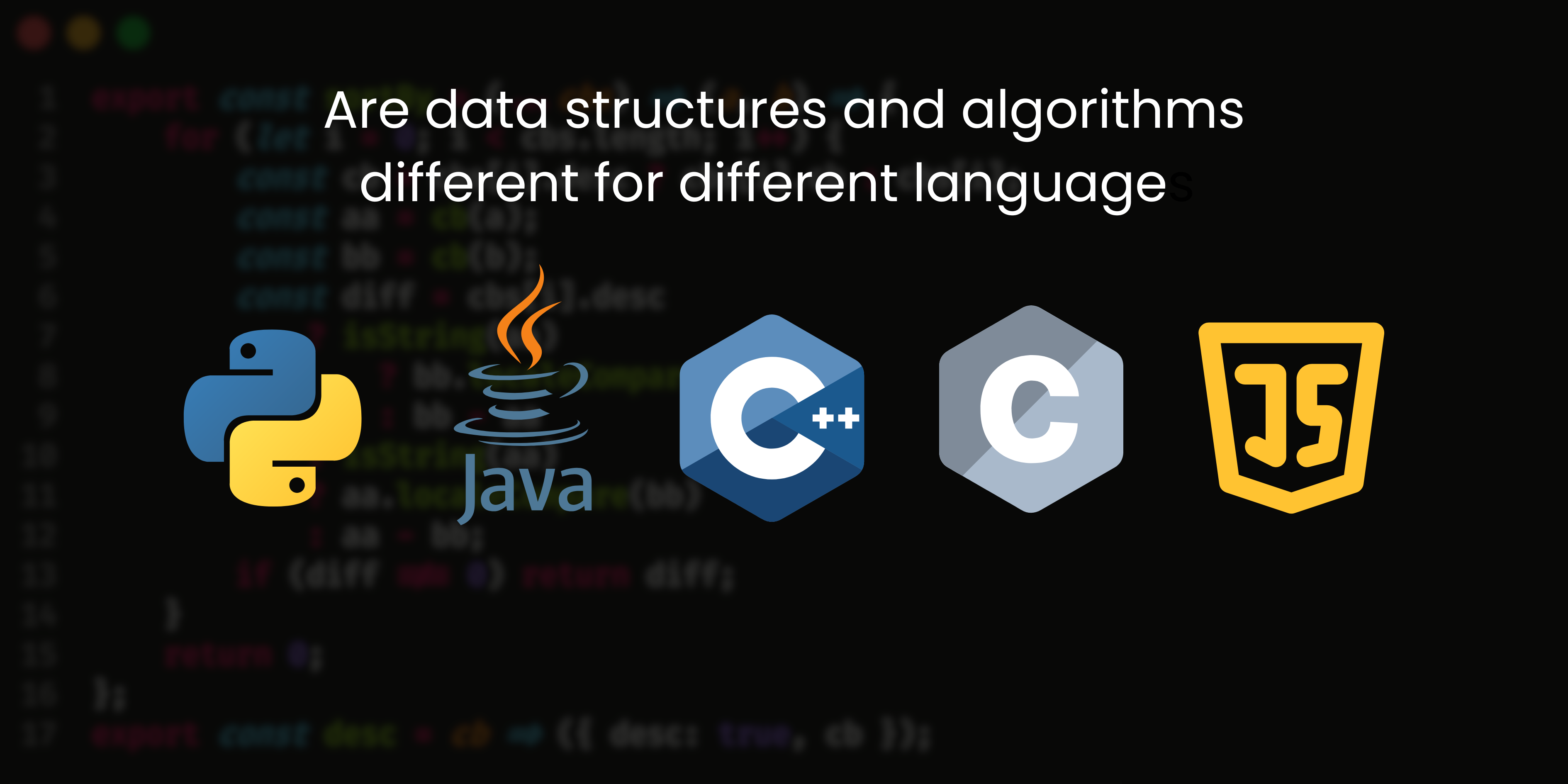Are Data Structures and Algorithms Different for Different Languages?

Comparing DSA implementations across JavaScript, Python, and Java
A common question among developers learning Data Structures and Algorithms (DSA) is whether these concepts change across programming languages. While the fundamental principles remain consistent, their implementations and optimizations can vary significantly. Let's explore how DSA manifests in different languages and what this means for developers.
Universal DSA Concepts
Core Insight: The theoretical foundations of data structures and algorithms remain constant regardless of programming language.
- Time complexity (Big O notation)
- Space complexity analysis
- Abstract data type behaviors
- Algorithm design patterns
- Problem-solving approaches
This language-agnostic nature is why DSA knowledge transfers well between languages. However, the implementation details and performance characteristics can differ.
Language-Specific Implementations
JavaScript
Structures:
- Arrays are actually objects with integer keys
- Objects as hash maps (but with insertion order preserved)
- No built-in heap/priority queue
- TypedArrays for numerical work
Algorithms:
- Event loop affects async algorithm design
- Single-threaded nature impacts parallel processing
- Prototypal inheritance affects object structures
Python
Structures:
- Lists as dynamic arrays
- Dictionaries as highly optimized hash tables
- Tuples as immutable sequences
- Sets with built-in mathematical operations
Algorithms:
- List comprehensions enable concise transformations
- Generator expressions for memory-efficient iteration
- Built-in sort uses Timsort algorithm
Java
Structures:
- Primitive arrays vs. ArrayList
- HashMap vs. TreeMap implementations
- Strongly typed collections
- Concurrent collections for threading
Algorithms:
- JIT compilation affects runtime characteristics
- Garbage collection impacts memory usage
- Bytecode execution adds abstraction layer
These distinctions illustrate that while the same data structure or algorithm may exist across languages, their behavior, performance, or even syntax might differ. Developers should not only know how something works in theory but also how their chosen language expresses and optimizes it.
Web Development Implications
Frontend (JavaScript)
- Virtual DOM diffing algorithms in frameworks
- State management efficiency in large apps
- Memoization techniques for performance
Backend (Node.js/Python/Java)
- Database query optimization
- API response caching strategies
- Load balancing and request processing
Full-Stack
- Data serialization between layers
- Algorithm choice for shared business logic
- Consistent data modeling across boundaries
These differences become particularly important when working on performance-critical applications or when interfacing between multiple languages in a single project.
Developers building cross-platform or microservice-based architectures especially benefit from understanding how DSA implementations behave differently across tech stacks.
Pro Tips for Language-Agnostic DSA Learning
- Learn DSA in one language first, then compare implementations
- Use language-specific benchmarks to verify performance assumptions
- Study standard library implementations of common structures
- Understand how your language's memory model affects data structures
- Don’t just translate code between languages—adapt it to leverage language strengths
Key Takeaway
While data structures and algorithms may be implemented differently across languages, the core concepts remain the same. Master the fundamentals first, then learn how your preferred languages realize these concepts in practice. This dual understanding not only enhances your adaptability but also empowers you to choose the most efficient solution depending on the project requirements and language capabilities.